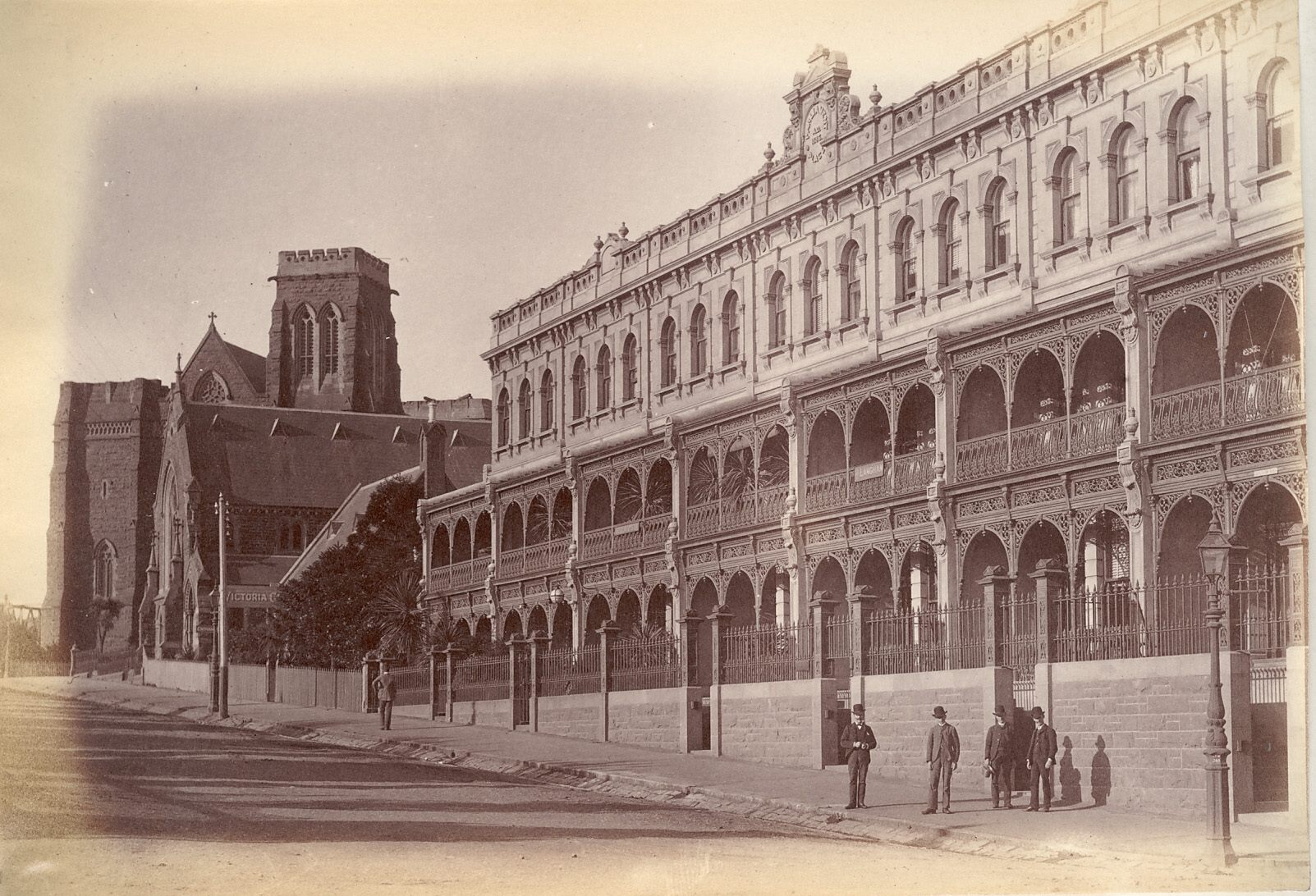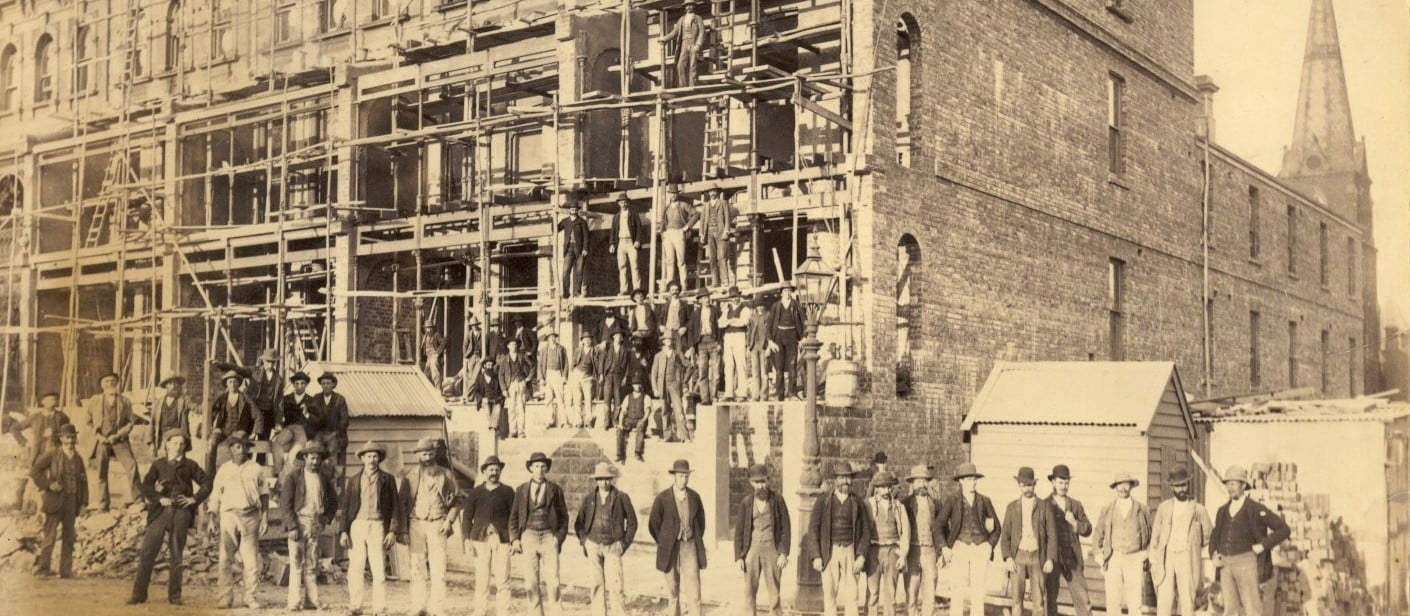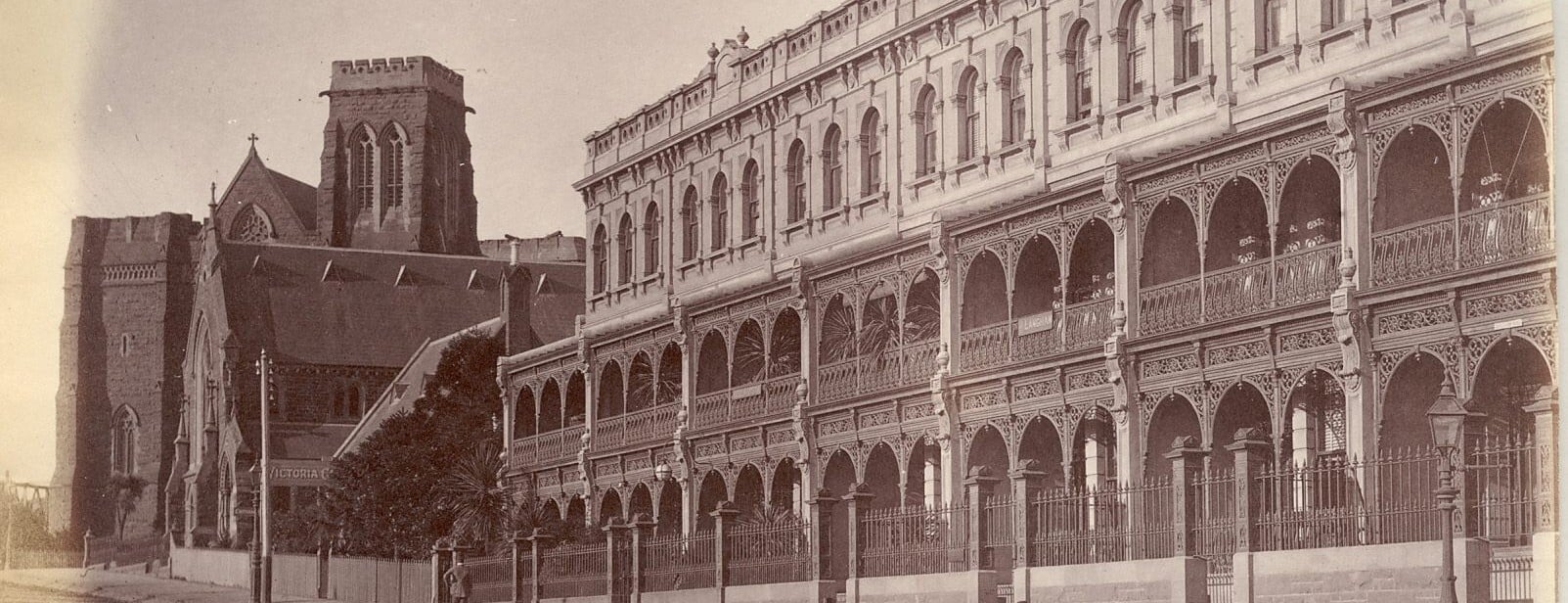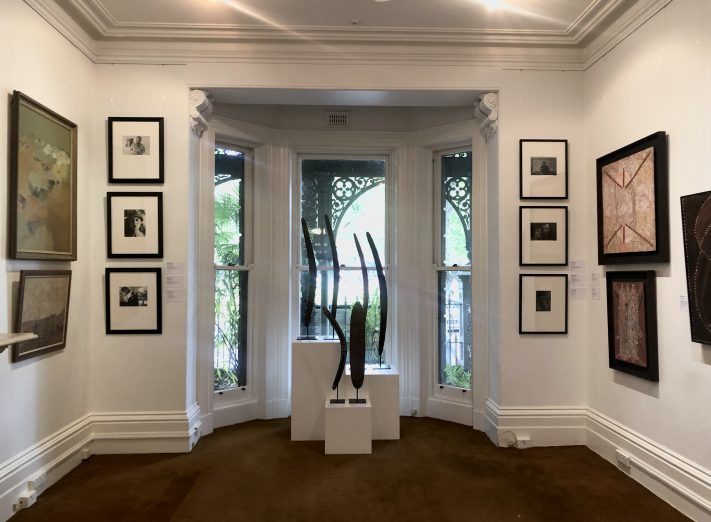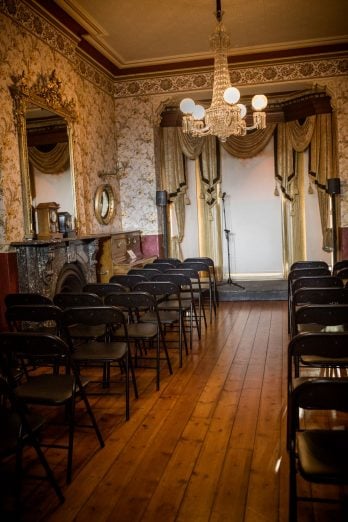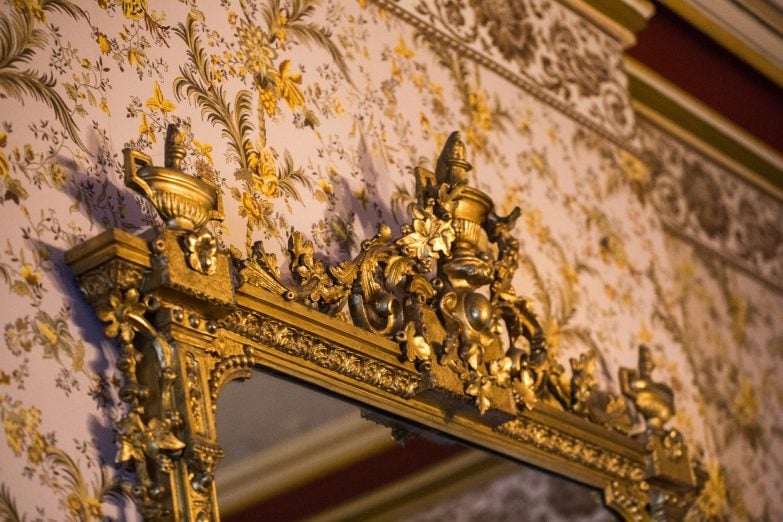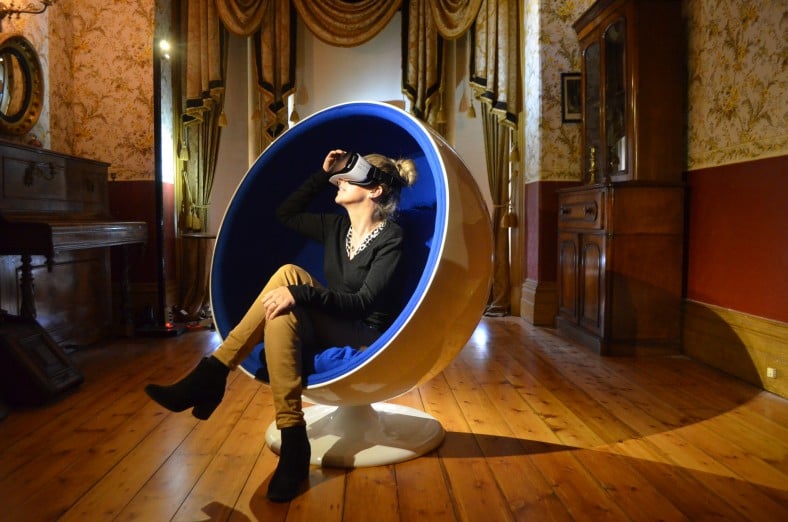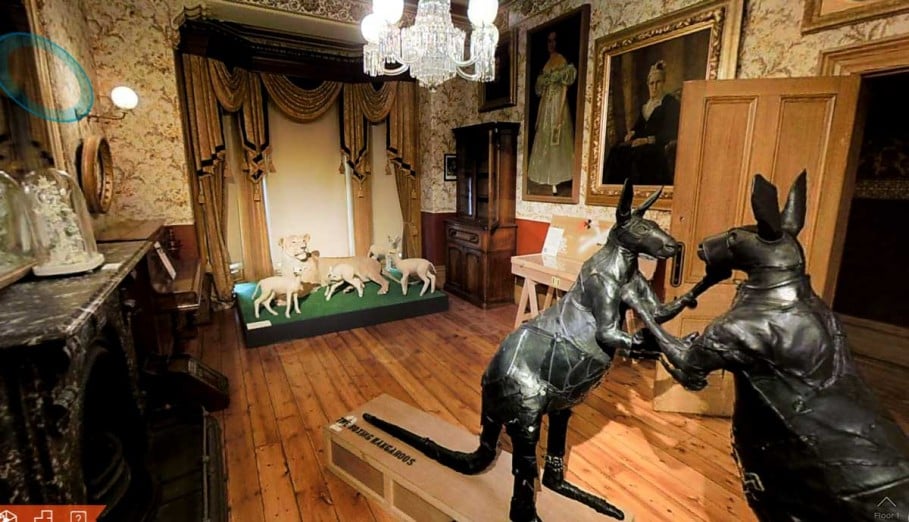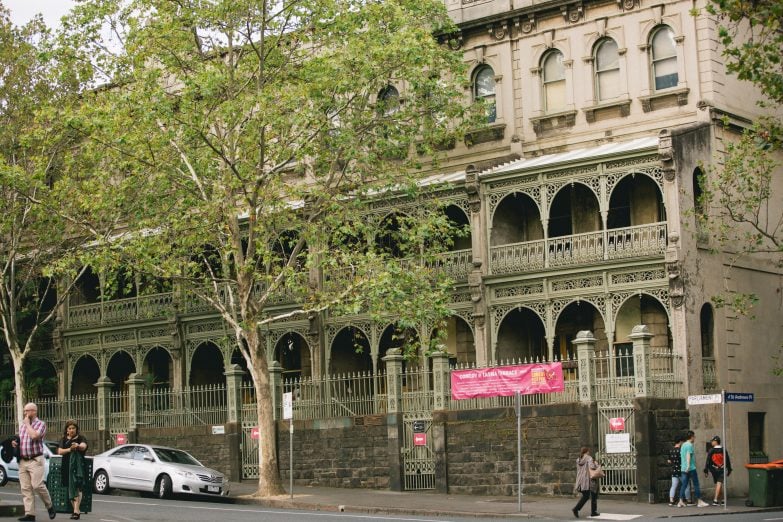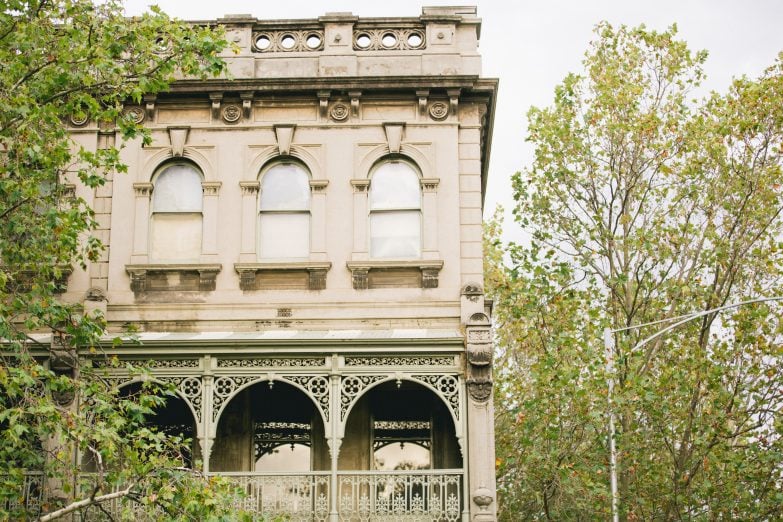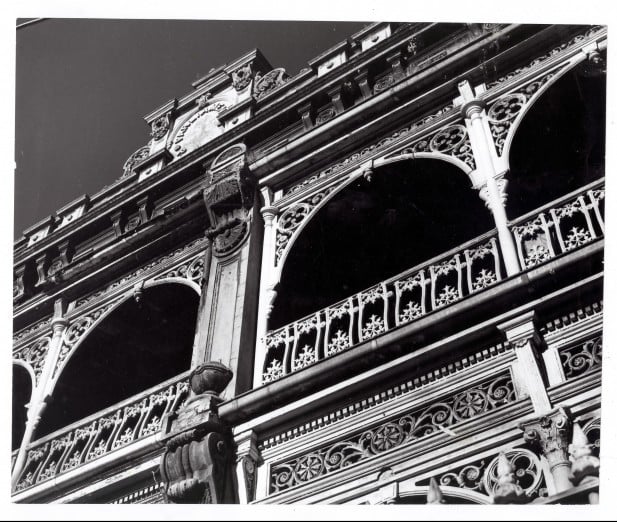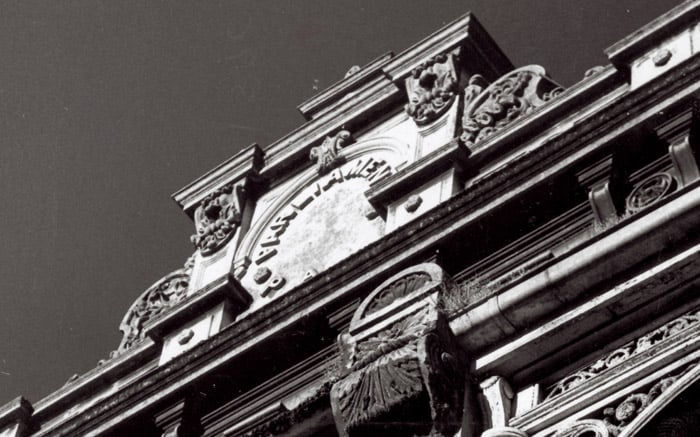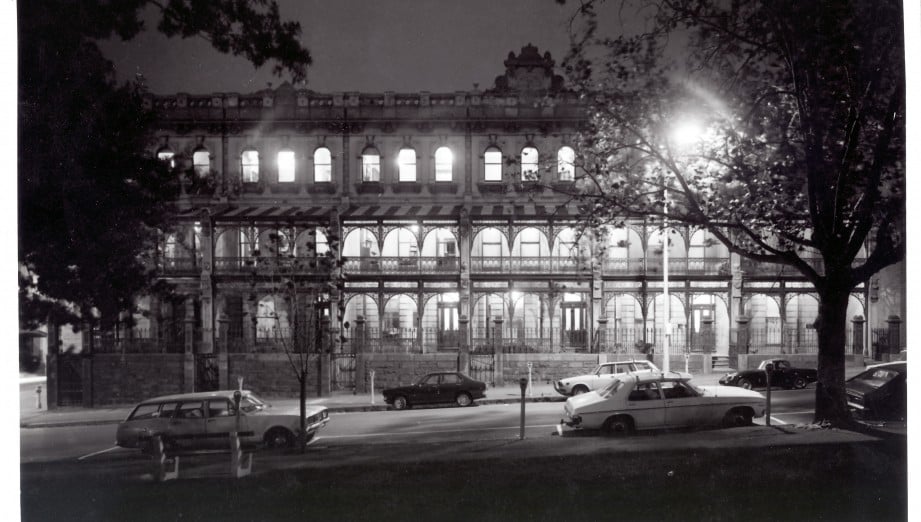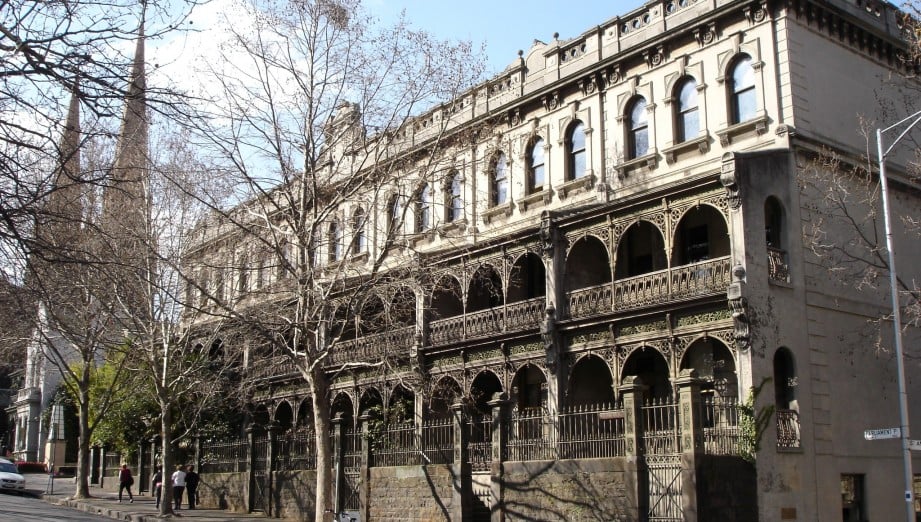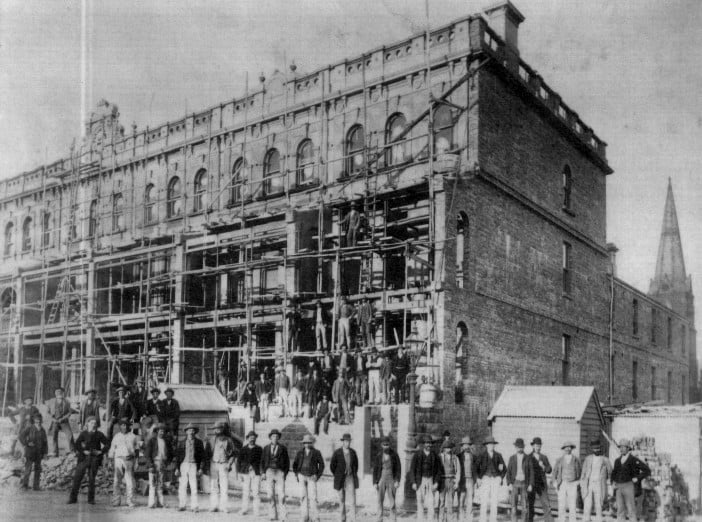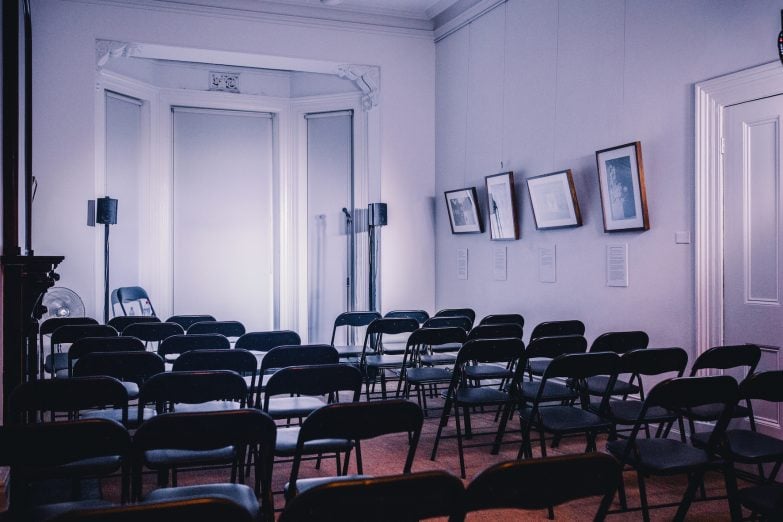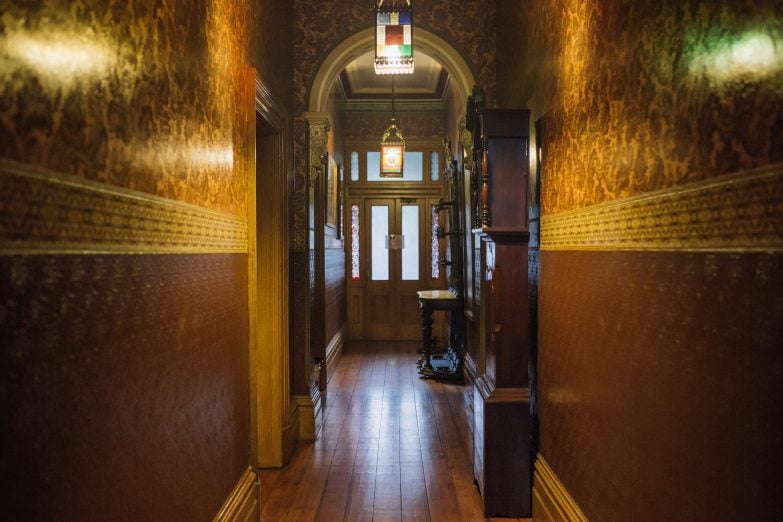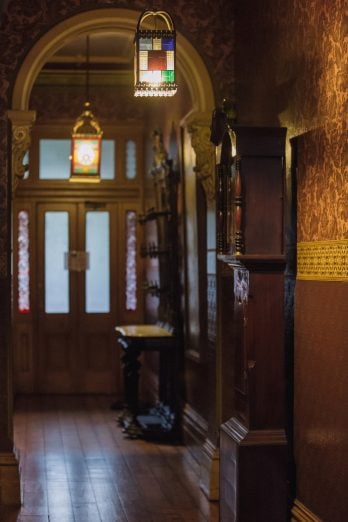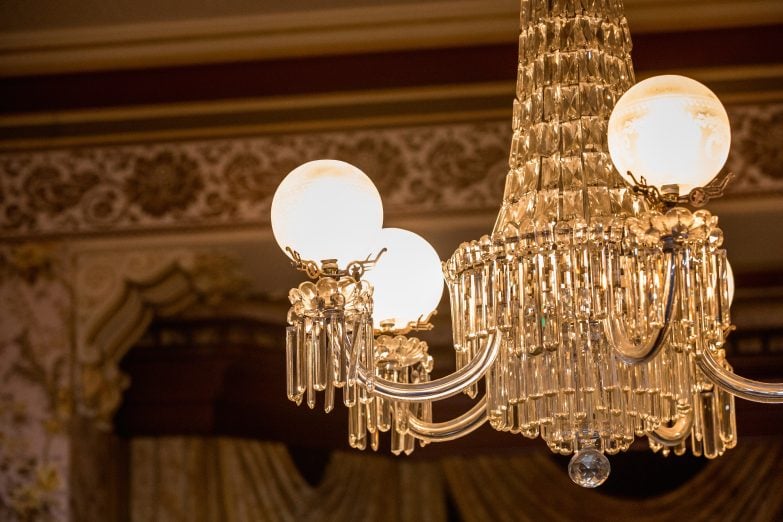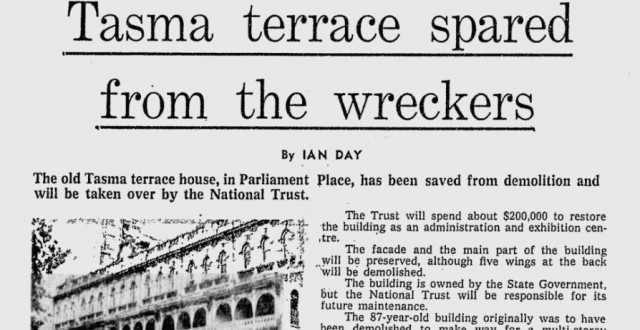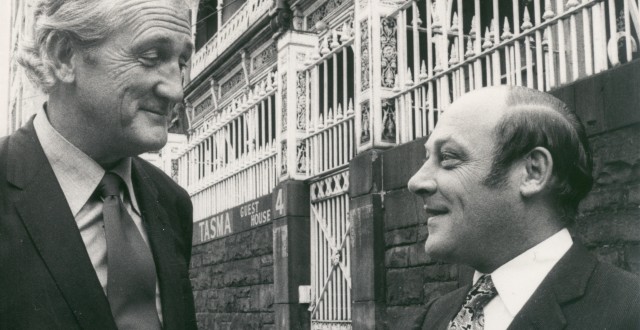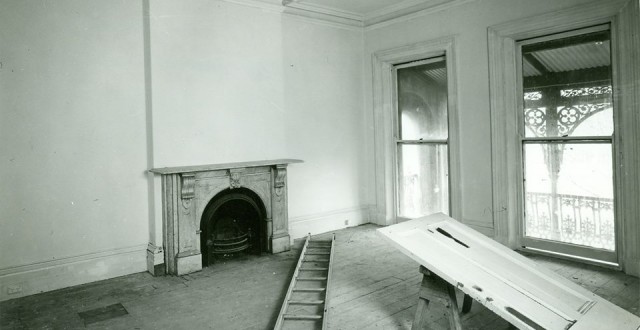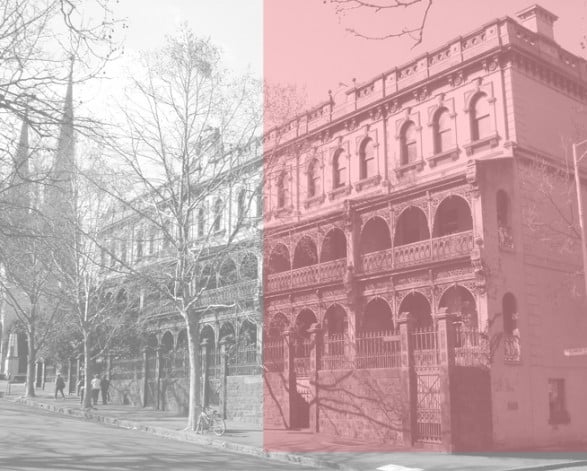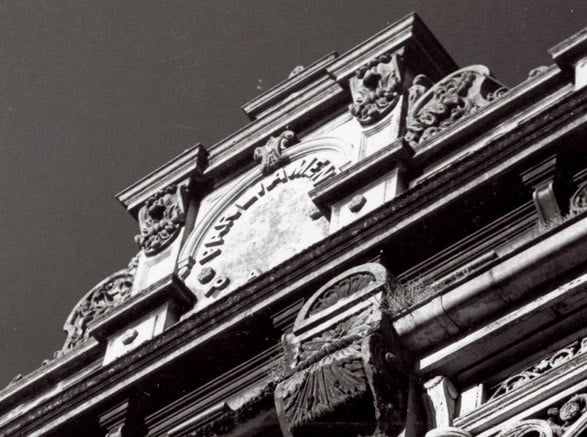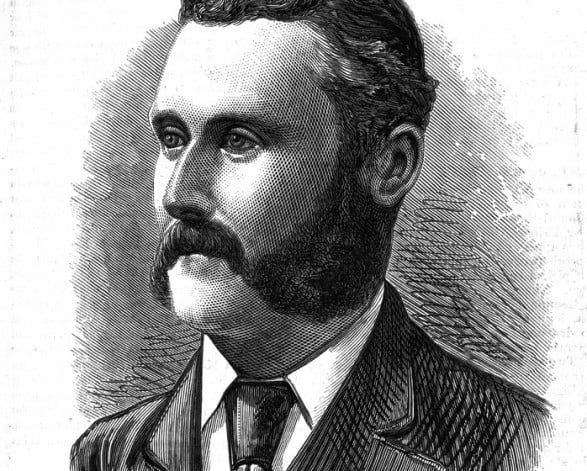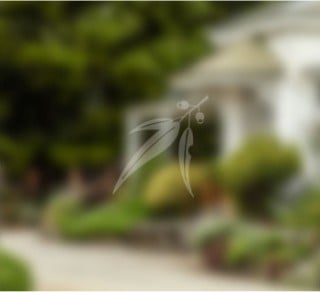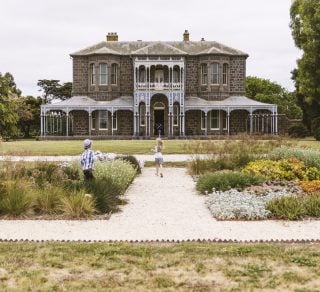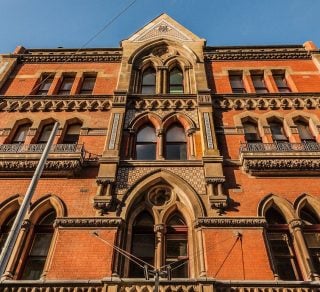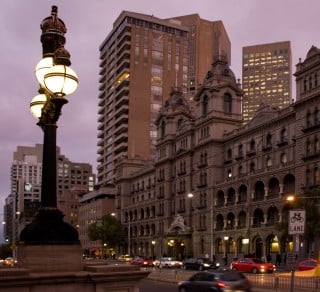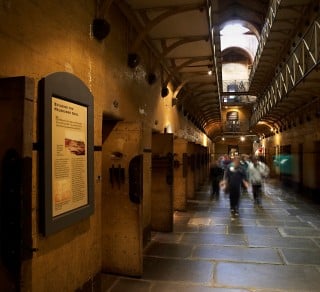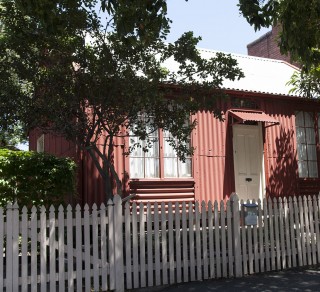picture: The 'Marlborough' lodging house shown in red.
WARNING - This content is not suitable for very young students. Teachers please use with discretion.
Constable William Harley was walking his beat in the vicinity of the public offices behind Parliament House on the night of 14th August 1890. It was late winter - overcast – becoming windier as the evening continued. All had been quiet on this Thursday evening until at 11.10 pm he met Mr Wright on the street. Wright was a barrister residing at Parliament Place. He had rushed to fetch Dr. Charles Ryan and was returning with him. A woman had been shot at the lodging house.
The police officer made his way past Treasury to the southern terrace recently re- named Marlborough House by the new proprietress. Constable Harley testified that he ran up the stairs to the front door and into the hall where he saw Mr. Alfred Turner, thence past the dining room, into the bedroom at the rear of the building on the ground floor. There he found a woman’s body supine, her left arm outstretched and a gun nestled on the fingers of her hand. The room was tidy with only slight evidence of a struggle, the pillows were disarranged and the bedclothes turned down as if the woman was about to retire to bed. She was clothed in a dressing gown unbuttoned to reveal a night dress, her slippers still on her feet, and the left side of her body was soaked in blood.
Hand-written in tight copperplate, the coroner’s report describes how the blood was ‘splashed’ and the carpet ‘covered’. Scorch marks were present on one hand, with traces of a black substance - gunpowder. Her right hand was lying across her stomach unblemished but splattered with a few spots of blood. The left hand side of her face was swollen and a bullet hole was visible beneath the outer angle of the left eye, a second wound was visible near the left ear. The first bullet fractured the woman’s upper jaw; the second was fatal.
Why did Edith Jane Forrester Jubb - business woman, lodging house operator, ex-pub licensee, mother of three, former actress and alleged adulteress - die? Melbourne newspaper, The Argus, reporting on the tragedy the following day, named it an "Attempted Murder and Suicide".
When a loud noise disturbed Mr D Wright he was sitting in his upstairs room. Thinking it was ‘someone violently kicking the back gate’ he ignored the sound for a few seconds before being startled by cries for help and the sound of rushing feet in the corridors. He opened his door to find Alfred Turner partly in the passage. Turner, with a slight graze like wound on his forehead, began to explain that Mrs Jubb attempted to shoot him and then shot herself. Three bullets in total were fired from a revolver belonging to Alfred Turner.
